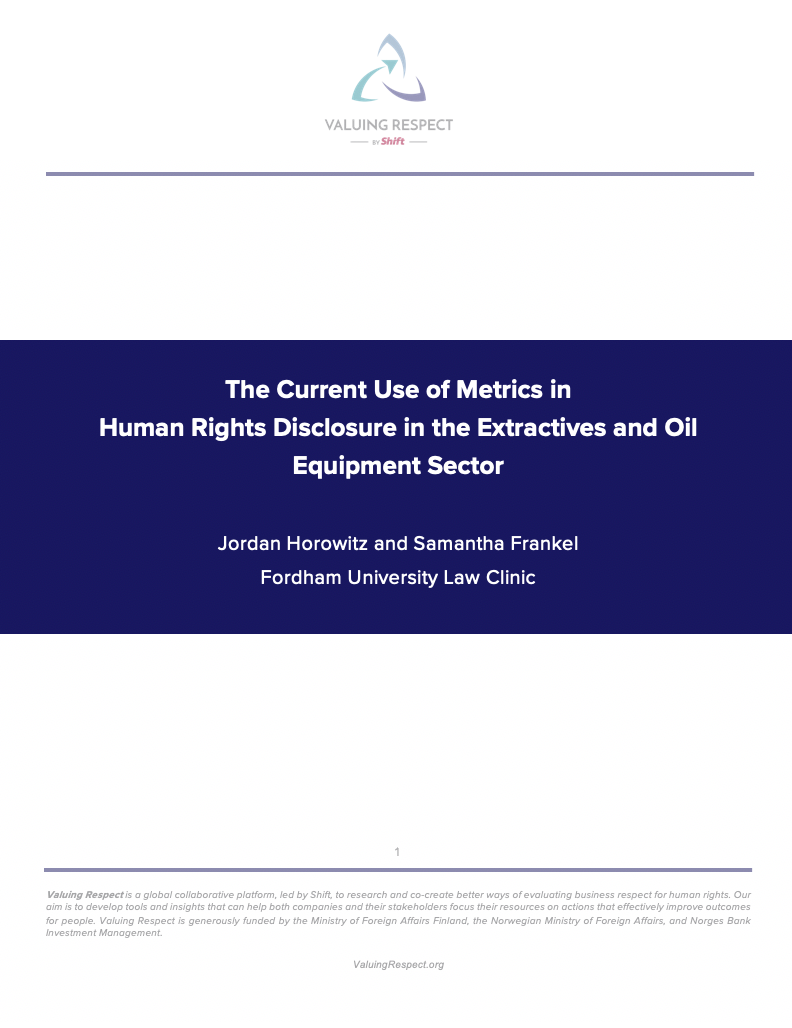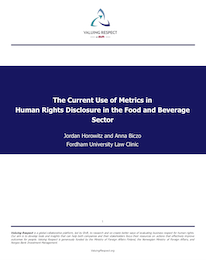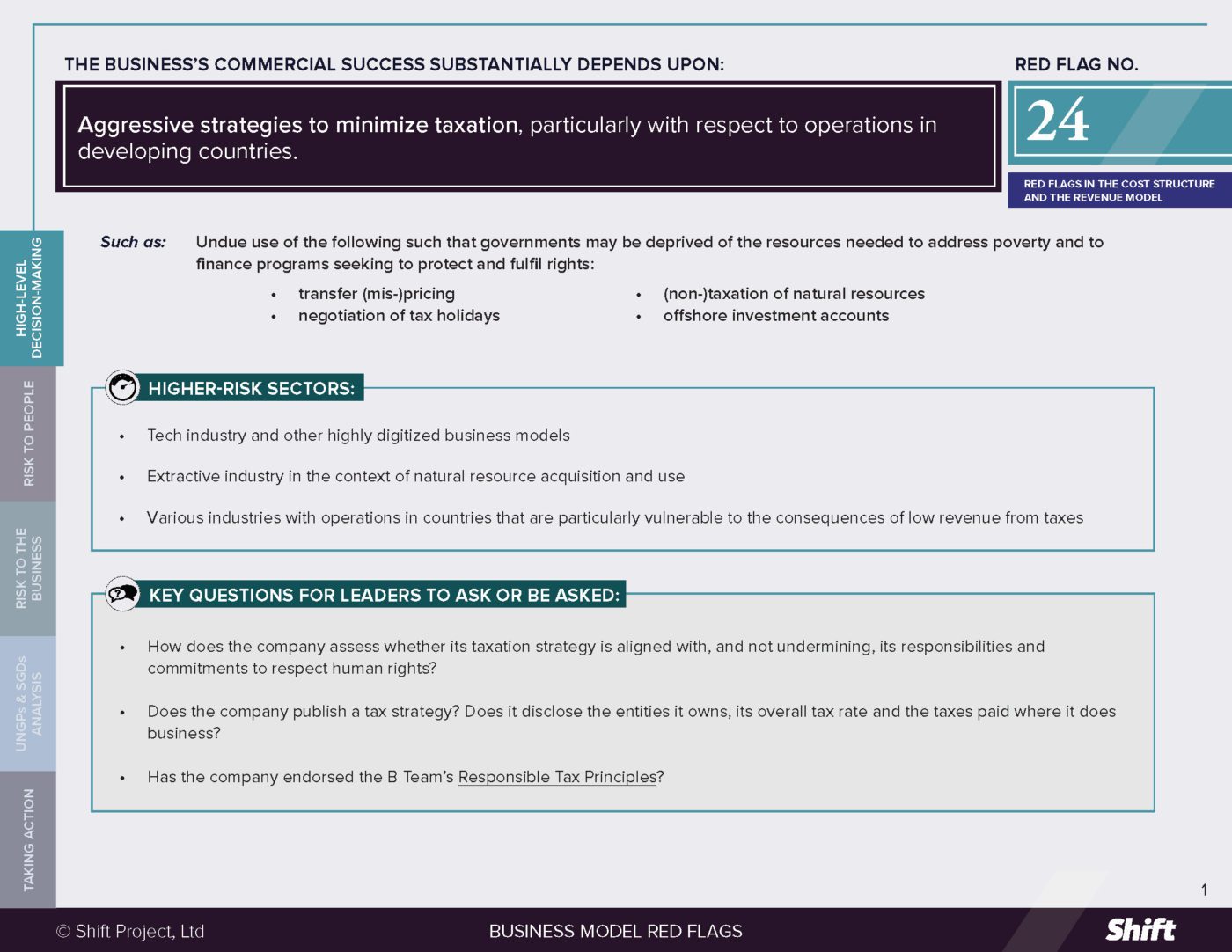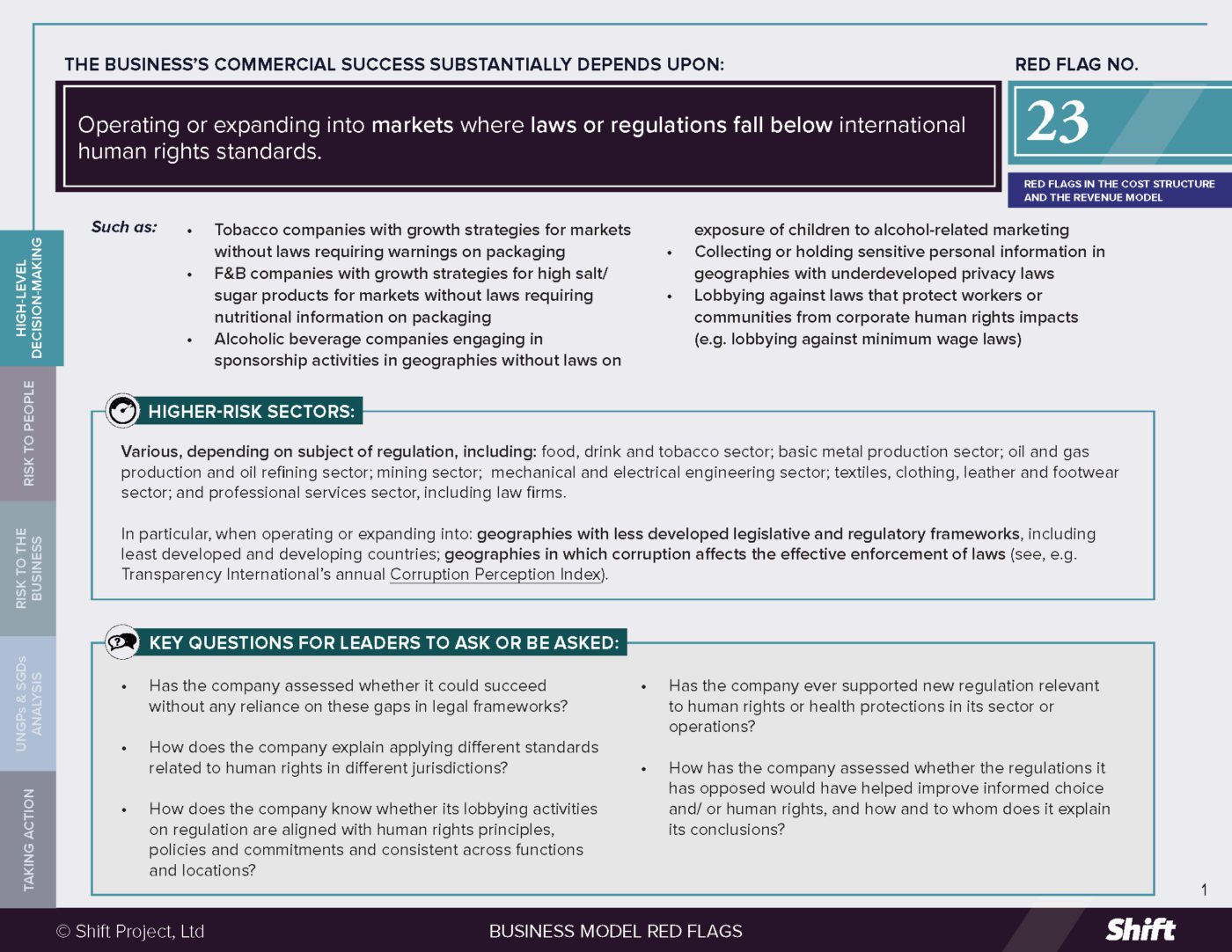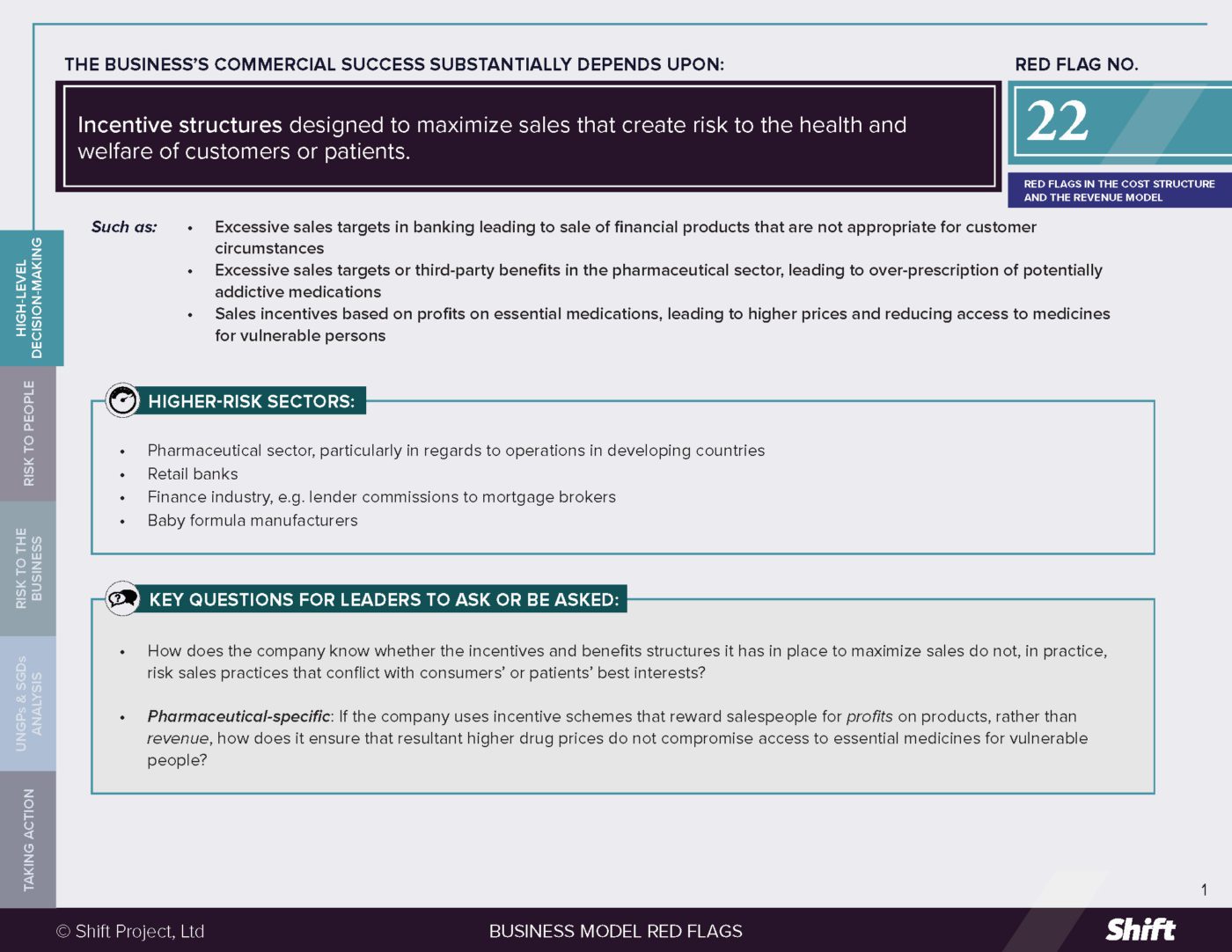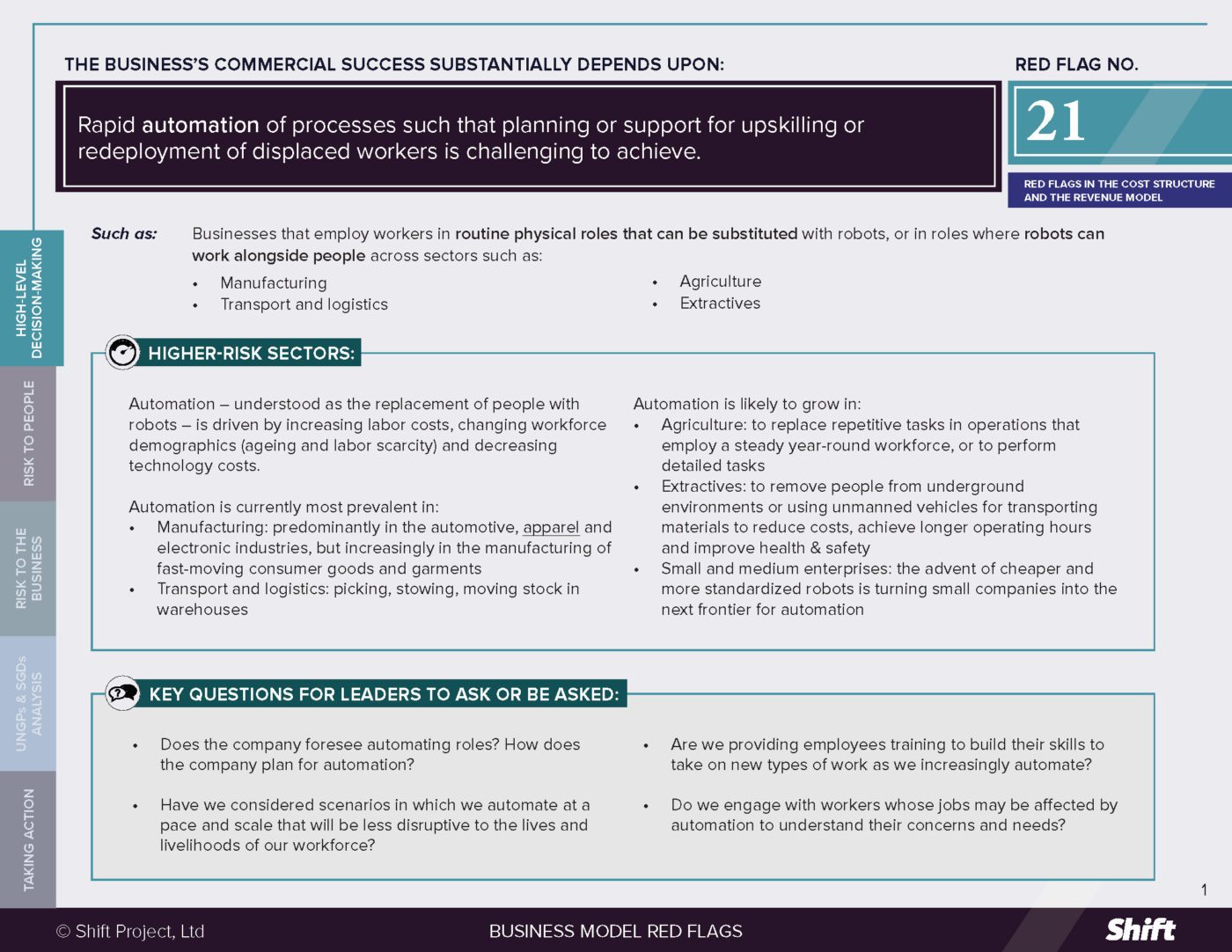This fact sheet summarizes findings from research by the University of Fordham Law Clinic into the current use of metrics in the human rights reporting of 25 companies in the extractives and oil equipment sector included in the UN Guiding Principles Reporting Database.
The research was conducted form mid 2018 to early 2019, and has informed the direction and focus of the Valuing Respect project.
A QUICK LOOK AT OUR FINDINGS
After reviewing the disclosure of 25 extractives and oil equipment companies in the UNGP Reporting Database, we found that the majority of metrics and data provided by the group fell within the categories of activity and outcomes for people in the areas of fatality and injury rates, internal and external audits and grievance mechanisms.
Further, while nearly all of the companies in these sectors provide data that indicates outcomes for people -such as reporting on safety performance metrics- it was not always clear how these metrics were linked to the companies’ inputs, activities and outputs. Few companies provided any data indicating practices and outcomes for the business.
OBSERVATIONS
- The majority of the companies reviewed reported various input indicators about the allocation of human resources to address human rights issues.
- Metrics on training are mainly activity indicators (i.e. the number of training hours/employees trained, with a focus on health, safety and human rights)
- Reporting about audits and assessments is dominated by indicators of activities having taken place, with some signals about the results of the activities.
- Companies provide data about workforce gender diversity, unionization and participation in LGBT programs. This tends to be in the form of activities and outputs, though they might be excellent leading indicators of improved outcomes for people that flow from company interventions.
- In the area of health and safety, companies do provide (almost always downward) trend data about fatalities and injuries (outcomes for people) and related outcomes for the business, such as lost-time injuries.
- Reporting on community engagement is provided, and focuses on resources and actions (inputs and activities) to gather and consider community feedback. Some positive outlier examples describe practices/behaviors, though they still lack supporting data.
- Information on the disruption and displacement of local communities is occasionally provided, with a focus on business practices of relocating, resettling or compensating communities and some reference to the numbers of people/beneficiaries of such efforts that reflect outcomes for people.
For the extended description of each finding, please download the full report below.

 Business Model Red Flags
Business Model Red Flags  Tool for Indicator Design
Tool for Indicator Design 